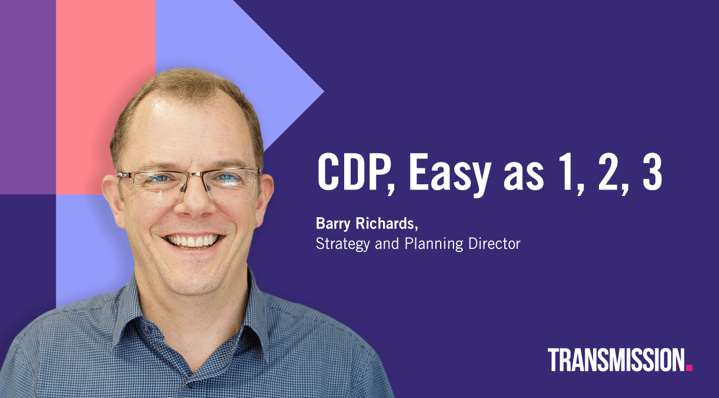
Customer Data Platforms (CDPs) are gaining momentum as one of the must-have pieces of MarTech and if you don’t already have one, it probably won’t be long until you at least start thinking about it.
It’s not unusual to witness hype and excitement around a nice piece of MarTech, but why are these platforms getting so much attention?
Well, first we need to look at the problems that exist with data in B2B, none of which will come as a surprise to anyone in sales and marketing. Data tends to be incredibly fragmented and in silos across the organisation and, more often than not, it’s incomplete and out of date. Add in digitalisation creating new data sources over the last 10-15 years and you also have a huge step up in the sheer volume of data being captured and stored.
Mirroring the rise in data has been the rise in MarTech; just 5 years ago there were 1,876 MarTech vendors, in 2020 that number has grown to 8,000 (Source Chiefmartec.com). So there are now many more repositories for all of this data, but also so much duplication in what’s being held. So the data problem has become greatly exacerbated.
The users whose data we’re capturing are aware of what’s being taken. Most are happy to part with it, but more and more of them want us to use it for their benefit. Their expectations are now set “use my data in real time”, the gauntlet has been thrown down and we need to find ways to meet the challenge.
I think most organisations would admit that they haven’t done so far. That’s the takeaway from some of the innovators and progressive marketing teams I’ve spoken to. And if we look at B2B as a whole it’s fair to say we haven’t scratched the surface.
Enter the CDP
So we have growing silos of incomplete data and rising expectations that we are going to do something of value with it for users. This is where CDPs come in. As “Packaged software that creates a persistent, unified customer database that is accessible to other systems” (official definition), the CDP is a silo killer that brings together fragmented data. In essence, these platforms connect to all that disparate data, fill in the gaps and have it ready to be distributed to all the systems where we can do something with it.
Having worked on several projects with CDPs I can see these platforms are really delivering against a promise long made in marketing. The idea of creating a 360-degree picture of the customer has been with us for a very long time, but who in B2B can claim to have truly achieved it? Some may – but probably following a very painful battle with technology.
However, while the technology has existed for a while, only now is it in a form that can be easily deployed and configured. Combining all of those sources and creating meaningful outputs (segments of data, customer and account insights etc) and delivering them seamlessly into other marketing systems e.g. marketing automation platforms.
Some of the typical data sources that go into these platforms are:
- Website activity
- Paid media and demand generation engagement (click-throughs, visits, downloads etc)
- Opportunity and pipeline data (from CRMs)
- Firmographics
- Intent signals and install base (for technology prospects)
And these can all be knitted together around key accounts and contacts.
So what does this mean for B2B marketing automation?
Well, the results for B2B marketing programmes are game-changing.
CDPs allow us to handle account selection and prioritisation for regional and global ABM programmes in real time, for instance. Picture your account lists automatically revising each quarter based on who is in market to buy. They can bring together a broad set of account insights – for example blending contract renewal sates, with third-party buyer intent signals and engagement with current marketing activity – into a single easy to use sales dashboard, supercharging your sales enablement. And they’re also providing more defined segments for demand generation programmes with signals that can be plugged straight into digital targeting solutions.
To reiterate, it’s not that we haven’t used all of these things before, it’s just that it’s never been as easy to bring them together into a single view.
Almost all research on technology points to adoption being the make-or-break factor of any project and the easier something is to use the more likely it is to be adopted. These platforms are a massive step forwards. Yes you’ll need a good analyst to make the most of a CDP – I’m not sure it’s ready for the everyday user – but with its simplicity of deployment and ready-made connectors and data sources, managing data can be taken away from IT and placed firmly in the hands of the business.
It’s time for marketing departments to take a look at CDPs and the ease with which you can deploy them and get them working. This could be as easy as 1,2,3.
Find out more on how Transmission can support your B2B marketing automation efforts here.